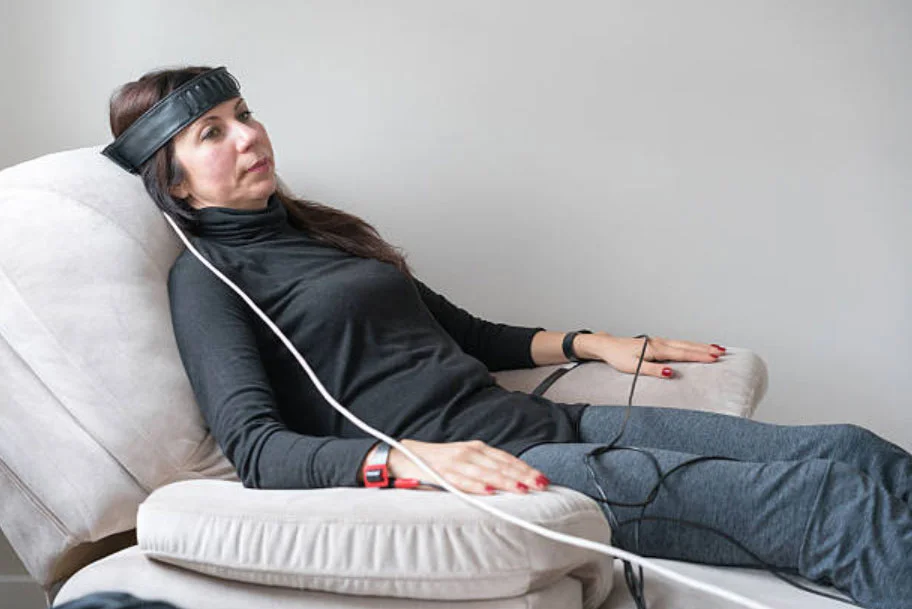- Know Everything About Nipah Virus, Which Is Back In Kerala Again
- Kevin Porter Jr Arrested On His Girlfriend’s Assault Charge
- Market Change Overnight - Know The 8 Things That Did It
- Who Are Alba Baptista And Chris Evans Married On The Weekend?
- Disrupted India vs Pakistan Asia Cup 2023 Match on Reserve Day
- 10 Common Foods That Contain No Calories or Are Very Low in Calories
- Men’s Styling Tips - Know the 9 Common Style Mistakes to Avoid
- Coco Gauff Beats Karoline Muchova and Reaches the US Open Final
- Danny Masterson Gets Life Sentence of 30 Years for Two Rapes
- Experience A Splendid Vacation in Kashmir with These 15 Gorgeous Sights
- India
- Saturday , July 27, 2024
- Last Published Sep 12, 2023, 6:48:32 PM

Is Biofeedback Helpful in Managing Chronic Pain?
An effective alternative to conventionally known types and methods of treatments like medications and surgeries, biofeedback therapy is a process involving both the mind and the body to navigate pain. As part of this treatment, the patient is not a recipient alone but rather an active participant who becomes aware of the body's various physiological and psychological processes and learns to navigate pain with the help of a guided therapist. Mindfulness, breathing, guided imagery, and in some cases even mediation are the ways in which this therapeutic process involves patients to ‘become aware of things that go on inside the body’. Because of this mind-body involvement, this therapy is extensively used to alleviate patients suffering from physiological issues like chronic pains and blood pressure as well as mental discomforts like insomnia, anxiety, and stress. Biofeedback therapists use a range of techniques and medical devices to help patients. These could be Galvanic Skin Response Training (GSRT), temperature sensors, Rheoencephalographs (for measuring blood flow to the brain), Hemoencephalographs (for measuring oxygen levels of the brain), Electromyogram (for measuring muscle tension), and Electrocardiograms (for measuring heart rate). Although a relatively new form of treatment, biofeedback has consistently proven to be beneficial for most patients. With more and more research and positive results, conventional practitioners are also recommending this therapy for various problems.
Benefits of Biofeedback Therapy for Chronic Pain
Biofeedback treatment has worked wonders for most patients with chronic pains. Here is how it works:Relieves Tense Muscles:
Progressive Muscle Relaxation (PMR) technique is used as a part of this therapy to bring relief to a tension muscle or a group of affected tight muscles. These may range from joint pains, the tension in the lower back, neck area, and abdominal pain and fibromyalgia. Biofeedback therapists also use the PMR technique to help patients suffering from migraines and tension headaches.Helps in Alleviating Inflammation:
Studies have shown that the biofeedback treatment technique has proven to be highly beneficial to patients experiencing inflammation of any sort. The electrical sensors attached to the affected area not only aid against tense muscles but also rid trauma caused due to inflammation.Helps to Manage Stress & Pain:
One of the most commonly known uses of biofeedback therapy is to help patients struggling with stress, physical pain, and lack of sleep. Since the premise of this technique primarily involves training the brain to perceive pain and work around it, this method has become a saviour for people dealing with such conditions.Aids in Coping with Anxiety:
A number of mental health issues are on the rise, with anxiety being one of the most common problems. Biofeedback treatment is an excellent way of managing and reducing anxiety without the usage of medications (and their side effects). Several therapists also recommend the use of this treatment for their patients, acknowledging its effectiveness. An effective treatment that produces results without patients having to pop medicines or undergo surgeries, the biofeedback technique has proven to be a boon. It takes the whole idea of treatment one step ahead by combining it with a person's mental and emotional faculties. Although a slow technique, biofeedback is here to stay. And you must opt for this kind of therapy on your doctor's advice and under the guidance of a trained therapist only.Disclaimer - The texts with tips or advice mentioned here are only for generic information, but not for a substitute of medical advice. Before applying any advice or tips, you should consult a respective doctor or expert. ATT is not responsible if you have any bad impacts on your health.












